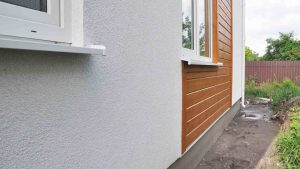When it comes to home improvements, especially those concerning the external façade of a property, there are myriad options to consider. Two popular choices for homeowners in the UK are external wall insulation (EWI) and silicone rendering. Both offer substantial benefits, but they serve different primary purposes. In this article, we’ll delve deep into the distinctive characteristics of both and help you make an informed decision for your home.
Introduction
First impressions last, especially when it comes to houses. The external appearance of your home not only dictates its curb appeal but also its energy efficiency and longevity. That’s where external wall insulation and silicone rendering come into the picture. Both solutions promise to transform the way your home feels and looks, but which one is right for you? Let’s find out.
What is External Wall Insulation (EWI)?
External wall insulation, as the name suggests, is a layer of insulation applied to the outside walls of a building. It serves primarily as an energy-saving measure, preventing heat loss and thus, leading to reduced energy bills. It’s particularly beneficial for homes without a cavity wall, as it provides an alternative means of insulating the property.
Key benefits of EWI include:
- Energy Efficiency: By reducing heat loss, homes with EWI can save a significant amount on energy bills.
- Home Comfort: EWI helps maintain a consistent indoor temperature, making homes warmer in the winter and cooler in the summer.
- Reduced Carbon Footprint: By consuming less energy for heating, homes emit fewer greenhouse gases.
What is Silicone Rendering?
Silicone rendering, on the other hand, refers to a finishing layer applied to the external façade of a home, primarily for aesthetic purposes. Made with a mix of silicone water repellents, this type of render is highly flexible, water-resistant, and breathable. It offers a smooth finish and comes in a variety of colours and textures.
Key benefits of Silicone Rendering include:
- Aesthetic Appeal: Offers a modern, smooth finish that can be tailored to individual preferences.
- Weather Resistance: Its water-repellent properties ensure protection against harsh weather conditions.
- Breathability: Allows moisture and vapour to escape from the building, preventing dampness and mould growth.
- Low Maintenance: Resists dirt and algae, keeping your façade looking fresh for longer.
Comparing the Two: EWI vs. Silicone Rendering
Now that we understand the basics of each, let’s juxtapose them:
- Primary Purpose: EWI primarily focuses on energy conservation, while silicone rendering is more about aesthetics and external protection.
- Cost: EWI can be more expensive initially but leads to long-term savings on energy bills. Silicone rendering might be less costly initially but doesn’t offer the same energy-saving benefits.
- Application: Both can be applied to a variety of substrates, including brick, block, and concrete. However, EWI requires a more comprehensive installation process.
- Maintenance: Silicone render requires minimal maintenance due to its dirt and algae-resistant properties. EWI, if left uncovered, can be susceptible to damage and may require protective layers like render or cladding.
Can They Work Together?
Absolutely! Many homeowners opt to combine the energy-saving benefits of EWI with the aesthetic appeal of silicone rendering. The insulation is first installed on the external walls, and then a layer of silicone render is applied on top. This offers the best of both worlds – a home that’s both energy-efficient and stunningly beautiful.
Use our calculator for an accurate price.
Conclusion
Both external wall insulation and silicone rendering have their unique set of advantages. Your decision should hinge on what you aim to achieve. If energy efficiency and warmth are your primary concerns, EWI should be your go-to choice. However, if you’re looking to enhance the visual appeal of your home while providing a protective layer against the elements, silicone rendering is the answer. For those unwilling to compromise, combining the two provides a holistic solution that’s both practical and visually appealing. Whatever you decide, both options promise a home transformation that’s worth the investment.








